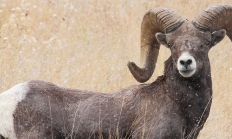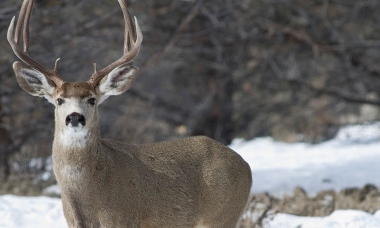
Search myodfw.com
Find maps, boundary descriptions and the percent public land for the Silvies Unit.
Sporting the form of a curlew, this medium-sized marsh wader is almost always found in flocks, flying in formation and quacking like ducks. Their long, down-curved bill complements their long neck and legs. Although their feathers appear black, a closer look will reveal an iridescence of bronze, purple, maroon, and green. They are named for their "white face" which appears in alternate plumage as a narrow border of white feathers along the edge of their reddish-purple facial skin, delineating a mask around the red eye. The White-faced ibis has extended its breeding grounds in Oregon to wetlands in Harney, Lake
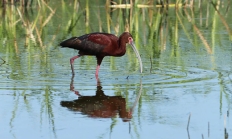
The cougar is the largest felid in Oregon, and except for the jaguar, the largest felid in the western Hemisphere. The skull of the cougar, also know as mountain lion, is massive; the canine teeth are large and slightly recurved. The heel pads of both fore and hind feet have three lobes on the posterior margin which are useful in separating the tracks of a cougar from those of other felids, such as the lynx. The dense and soft dorsal fur typically is tawny, but slate gray and reddish brown individuals are known. The venter is whitish. The back of
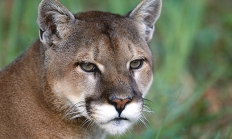
The common raccoon is a moderately sized, heavily furred mammal best characterized by its distinctive markings. The face has a dark brownish-black eye mask sharply separated from whitish nose patches, eyebrow lines, and exclamation points between the eyes. The inside of the ears is ringed with white, adding to the facial contrast. The tail is annulated with five to seven dark rings separated by light gray or tan rings. The hind legs are longer than the front; thus, in a walking gait, the rump is higher than the head. The common raccoon occurs in suitable habitats throughout Oregon; it does
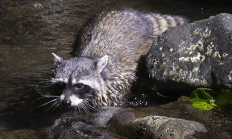
Nearly a dozen subspecies of Odocoileus hemionus are recognized. Of these, two occur in Oregon - the mule deer and Columbian black-tailed deer, often just referred to as "Black-tailed deer." The mule deer is larger, lighter in color, and often associated with more open habitats, whereas the black-tailed deer is smaller and darker, and frequents dense, early seral forest communities. The most distinguishing feature of the black-tailed deer is the tail. Although not as long or wide as that of the white-tail, it is much larger than that of the mule deer. Because of the differences in size, color, marking

In Oregon, the nutria is considered an invasive species. The nutria is a large rat-like semiaquatic rodent. The species has a hunched body; a round, nearly hairless tail; a valvular mouth and nose; and pentadactyl feet with naked soles. The toes of the hind feet, except for the hallux, are included in a web. As an adaption to the aquatic environment, the eyes, nostrils, and small ears are set high on the sides. The pelage consists of long, course guard hairs and soft, dense underfur. Overall, the color usually ranges from dark brown to yellow-brown. The muzzle is frosted with

The Columbian white-tailed deer is the smallest cervid in Oregon. The most distinguishing feature is the long, wide tail that can easily be seen, especially when raised when startled. The tail is brown dorsally with a white fringe, and white ventrally. In males, antlers with tines typically arise from a single main beam. In winter, the pelage is a dark buffy-gray and consists of relatively long, thick, and somewhat brittle hairs; in summer, the pelage is lighter with more tawny tones and is shorter and thinner. The midline of the dorsum is darker and the fade lighter; in males, the

Check out the latest Chinook and steelhead counts at Leaburg Dam.
The elk is the largest cervid in Oregon. These heavy-bodied, deer-like mammals have narrow faces tapering to a naked nose pad; relatively small, pointed ears; a heavily maned neck; a back slightly humped at the shoulders, a contrasting rump patch; and a small tail. Pelage color is grayish brown to reddish brown, somewhat lighter among males in winter. The mane is dark brown and the rump patch and tail are cream colored. The underparts (except for a whitish patch between the hind legs) and legs are dark brown to almost blackish. Adult females, their current offspring, and their female offspring

Find maps, boundary descriptions and the percent public land for the Dixon Unit.
Find maps as well as boundary and the percent public land for the Metolius Unit.
Find maps, boundary descriptions and the percent public land for the Siuslaw Unit.
Find maps, boundary descriptions and the percent public lands in the Sumpter Unit.

Find maps, boundary descriptions and the percent public land for the Heppner Unit.
Find maps, unit descriptions and the percent public lands in the Starkey Unit.
Not sure what to do with a fishing rod even if you had one? Thought about hunting but getting started seems like an impossible task? Then let us help you. During ODFW's hands-on workshops and family fishing events we will provide the instruction and gear you'll need to actually catch a fish or shoot a pheasant. Other classes will help you navigate the controlled hunt process, or show you what equipment you'll need to hunt or fish. ODFW offers many classes and workshops throughout the year. View and register for an upcoming event in our new Volunteer and Event Management
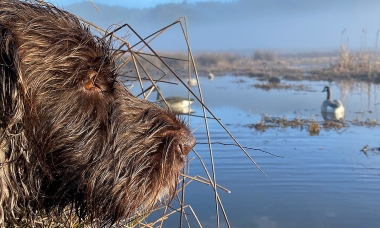


Features: California bighorn sheep are one of two subspecies of wild sheep in Oregon. They are usually smaller, with a less blocky build and smaller horns than Rocky Mountain bighorn sheep. Bighorn sheep were extirpated from the state in the 1800s. Current populations are the result of a reintroduction effort by ODFW and sportsman groups. Habitat: California bighorn sheep are the most abundant subspecies in Oregon with an estimated 3,700 found among 32 herds in central and southeast Oregon. They prefer rugged, open habitats with a good view of their surroundings. Techniques: Bighorn sheep are one of the rarest game
